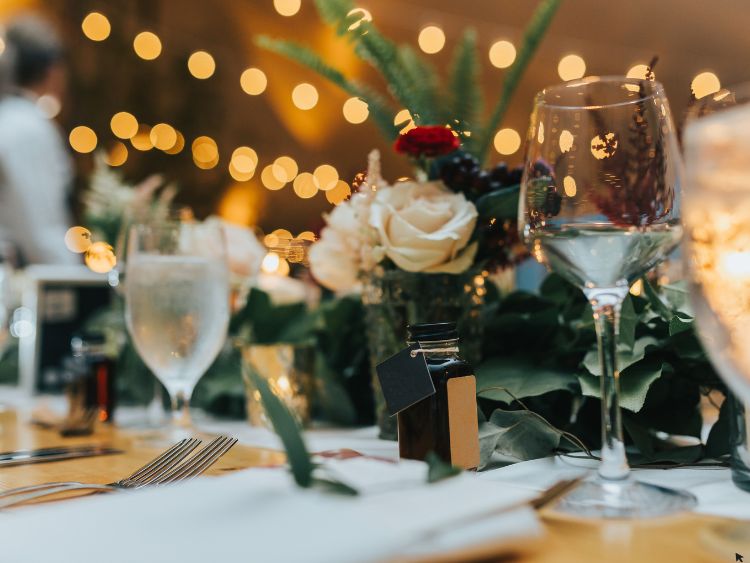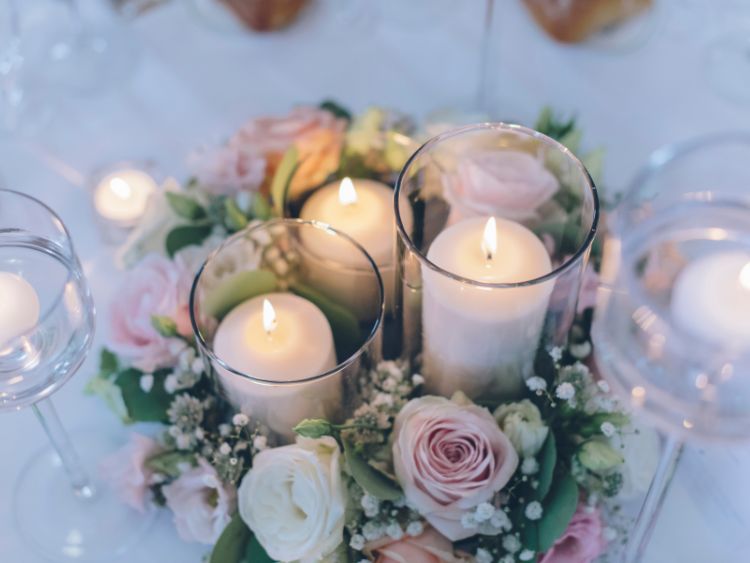Formal vs Black Tie: Understanding the Key Differences
When it comes to dressing for special occasions, the terms “formal” and “black tie” are often thrown around, but what do they really mean? If you’ve ever found yourself puzzled over what to wear to a wedding or a gala, you’re not alone. The nuances between these two dress codes can be subtle but significant. In this article, we’ll delve deep into the distinctions between formal and black tie attire, ensuring you never show up underdressed or overdressed again.
What is Formal Attire?
Formal attire is a broad category that encompasses various dress codes depending on the event’s setting, time, and cultural context. Traditionally, formal attire is reserved for significant life events like weddings, funerals, and important social gatherings. But what does formal attire entail?
Men’s Formal Attire
For men, formal attire typically means a dark suit, a crisp white shirt, and a tie. The suit should be well-tailored, with the jacket and trousers matching in fabric and color. Accessories like cufflinks, a pocket square, and polished dress shoes complete the look. While a tie is often required, some formal events might allow for more relaxed options, like a bow tie or even a cravat.
Women’s Formal Attire
Women’s formal attire offers more variety but is equally specific. A floor-length evening gown is the gold standard, though a sophisticated cocktail dress may also be appropriate depending on the event. The key is to choose a dress that exudes elegance without being overly revealing. Pair your dress with high heels, tasteful jewelry, and a clutch bag to complete the ensemble.
What is Black Tie Attire?
Black tie attire is a specific subset of formal wear that is more rigid and traditional. It’s typically reserved for evening events that demand the highest level of elegance and sophistication. If you’ve received an invitation that states “black tie,” there’s a clear expectation for how you should dress.
Men’s Black Tie Attire
For men, black tie means one thing: a tuxedo. A classic black tuxedo, white dress shirt, black bow tie, and black patent leather shoes are non-negotiable. Some variations, like a midnight blue tuxedo, are acceptable, but the overall look should remain polished and classic. Accessories like cufflinks and a formal watch can add a personal touch, but they should never overshadow the outfit’s timeless elegance.
Women’s Black Tie Attire
For women, black tie attire usually calls for a floor-length evening gown. The gown should be elegant and sophisticated, with fabrics like silk, satin, or velvet being popular choices. While long gowns are the norm, a chic, knee-length cocktail dress may be acceptable, especially for modern events. The key is to ensure that your outfit aligns with the event’s tone—glamorous but not gaudy.
Key Differences Between Formal and Black Tie
Now that we’ve defined what formal and black tie attire generally involve, let’s explore the key differences between the two.
Level of Formality
While both dress codes are formal, black tie is a notch above in terms of formality. Formal attire offers more flexibility, allowing for different styles and interpretations depending on the event. On the other hand, black tie is highly specific, with little room for deviation from the traditional tuxedo or evening gown.
Time of Day
Another important distinction is the time of day. Formal attire can be worn for both daytime and evening events, though the specifics might change. For example, a formal daytime wedding might call for lighter colors and fabrics, while an evening event might require darker tones. Black tie, however, is strictly an evening dress code, usually reserved for events starting after 6 PM.
Cultural Context
Cultural context also plays a role in determining whether an event is formal or black tie. For instance, in some cultures, black tie might be the norm for weddings, while in others, it’s reserved for high-society galas and award ceremonies. Understanding the cultural nuances can help you navigate these dress codes more effectively.
When to Wear Formal vs Black Tie Attire
Choosing between formal and black tie attire depends largely on the event you’re attending. Here’s a quick guide to help you decide:
Weddings
Weddings can range from casual to ultra-formal, so it’s important to read the invitation carefully. If it states “formal,” men can opt for a dark suit, while women might wear an elegant cocktail dress or gown. However, if the invitation says “black tie,” men should don a tuxedo, and women should choose a floor-length gown.
Galas and Fundraisers
Most galas and fundraisers are black tie events, particularly those held in the evening. These events are opportunities to dress to the nines, so a tuxedo or evening gown is essential. On the other hand, if the event is during the day, formal attire might be more appropriate.
Award Ceremonies
Award ceremonies vary in formality depending on the industry and venue. While Hollywood events might demand black tie, others could be slightly less formal, allowing for a well-tailored suit or a sophisticated cocktail dress.
Common Misconceptions About Formal and Black Tie
There are several misconceptions surrounding formal and black tie dress codes. Let’s debunk a few of them:
“Formal and Black Tie Are the Same.”
This is a common misconception. While black tie is a type of formal attire, not all formal attire qualifies as black tie. Understanding the differences can save you from potential embarrassment at your next event.
“A Suit is Always Appropriate for Black Tie.”
While a suit might be suitable for many formal occasions, it’s not appropriate for a black tie event. The expectation for men at a black tie event is a tuxedo, and anything less can be seen as underdressed.
“Women Can Wear Anything Fancy.”
The idea that women can wear any fancy dress to a black tie event is misleading. The dress should align with the event’s tone—sophisticated and elegant, without being too revealing or casual.
Tips for Nailing the Look
Whether you’re dressing for a formal or black tie event, here are some tips to ensure you look your best:
Men’s Tips
- Tailoring is Key: Whether you’re wearing a suit or a tuxedo, ensure it’s tailored to fit your body perfectly. Ill-fitting attire can ruin an otherwise sharp look.
- Keep it Classic: Stick to classic colors like black, navy, or charcoal for formal events. For black tie, black or midnight blue is your best bet.
- Don’t Overdo Accessories: Keep accessories minimal and tasteful. A pocket square, cufflinks, and a formal watch are all you need.
Women’s Tips
- Choose the Right Fabric: Opt for luxurious fabrics like silk, satin, or velvet for a black tie event. For formal events, the fabric can be more varied but should still exude elegance.
- Pay Attention to Length: For black tie, a floor-length gown is standard. For formal events, you have more flexibility, but the dress should still be appropriate for the occasion.
- Accessories Matter: Choose accessories that complement your outfit without overpowering it. A simple clutch, understated jewelry, and elegant heels can complete your look.
FAQs: Formal vs Black Tie
Q: Can I wear a cocktail dress to a black tie event? A: While a floor-length gown is the norm for black tie events, a chic cocktail dress can be acceptable, especially for more modern or less traditional events. However, it’s safer to opt for a longer gown if you’re unsure.
Q: Is it ever okay to wear a tuxedo during the day? A: Traditionally, tuxedos are reserved for evening events. Wearing one during the day can be seen as overly formal and out of place.
Q: Can men wear a tie instead of a bow tie for black tie events? A: A bow tie is the standard for black tie events. While some modern interpretations allow for a necktie, it’s best to stick with the traditional bow tie to avoid any fashion faux pas.
Q: What shoes should women wear for formal or black tie events? A: High heels are the go-to choice for both formal and black tie events. Choose a pair that complements your outfit, and make sure they’re comfortable enough to wear for the duration of the event.
Conclusion
Understanding the differences between formal and black tie attire can make all the difference when preparing for a special event. While both require a level of elegance and sophistication, black tie demands a more specific and traditional approach. By following the guidelines laid out in this article, you’ll be well-prepared to make a stylish statement, whether you’re attending a wedding, gala, or any other significant occasion.
Authoritative Links:
- https://www.gq.com/story/black-tie-vs-formal-dress-code
- https://www.vogue.com/article/black-tie-attire-guide
- https://www.brides.com/formal-vs-black-tie-5070201
- https://www.theknot.com/content/formal-vs-black-tie-wedding-attire
This article should provide your readers with a comprehensive understanding of the differences between formal and black tie attire, helping them make informed choices for their next big event.



